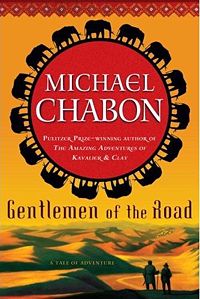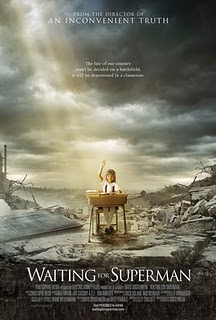"Nevertheless, the man is a great composer. One has only to hear his music beside that of any of the standard eclectic modernists to know that. Because his music really vibrates and theirs doesn't."
If you want to hear what we all mean, jump over to the
audio guide for Alex Ross's
The Rest is Noise, and be certain to listen to the selections from his monumental
From the Canyons to the Stars. For my money, that work is one of the most powerful and transcendent he ever wrote. (Ross also has great footage up of Messiaen at the organ.)
We had our own Carter/Messiaen birthday celebration in early October around here, and I gave a short concert talk at the mini-festival's opening. In celebration of the dual birthdays, here's the text of my lecture:
This past week, my wife and I have slowly been working our way through HBO’s miniseries
John Adams.
It is a wonderfully acted portrait of a tumultuous time in American history, but in the most recent episode we watched, which covers Adam’s stint as Vice-President under Washington, I was struck by the close connection the United States and France have had since its inception.
In the miniseries, we see how Adams goes to France to aid Benjamin Franklin in negotiating France’s entrance into the American Revolution.
Then, once we were established as a nation, and France was having her revolution, France came to the US and asked for aid in the burgeoning war with Britain.
The US claimed that their treaty had been with King Louis 16
th and they therefore would be neutral.
That’s right, although Jefferson wanted us to aid France the way France had aided us, we stayed out of it all.
This uneasy relationship with
France, seen right at the beginning of the
United States, resonated in me with our celebration of two composers tonight, one French and one American.
This was because during the 20
th century, the musical connection between the two nations could not have been stronger.
During WWI, French composers flocked to the United States to find safe harbor and succor.
In the 1920s, American composers beginning with Aaron Copland flocked to France to study under Nadia Boulanger.
After WWII, the OMGUS (office military government,
united states) established a new summer course in
Darmstadt, Germany to try and rehabilitate German musicians by introducing them to French and American musical trends, ultimately helping shape the future direction of modern music, a future that was directly impacted by the two men we celebrate tonight.
In many ways, Olivier Messiaen is probably rolling in his grave and Elliot Carter is rolling in his bed with the knowledge that we put them on a program together in this way.
It would be hard to find two men whose music, on the surface, is more different.
But this flashpoint of modernism, the Darmstadt school as begun by French and American interests, will serve as a useful metaphor for ultimately understanding how and why we put these men together beyond the mere fact of their birth being one day apart (December 10 for Messiaen and Decemeber 11 for Carter) one hundred years ago.
Messiaen as ColorColor is the heart of Messiaen’s music. Messiaen said that the terms “tonal,” “modal” and “serial” (and other such terms) are misleading analytical conveniences, and that for him there were no modal, tonal or serial compositions, only music with color and music without color. For Messiaen, Claudio Monteverdi, Wolfgang Amadeus Mozart, Chopin, Richard Wagner, Mussorgsky and Stravinsky all wrote strongly colored music.
In addition, Messiaen experienced mild synaesthesia, manifested as some sort of experience of colors when he heard or imagined music (he said that he did not perceive the colours visually). He even went so far as to notate the colors in the music (in
Couleurs de la Cité Céleste and
Des canyons aux étoiles, for instance) to aid the conductor in interpretation rather than to specify which colors the listener should experience.
But this doesn’t mean that he colors according to traditional tonal models of major and minor.
As you heard in the chords I played, he ascribed color to modes that he created.
These are the famous “modes of limited transposition, Mode 1 = whole tone scale, Mode 2 = octatonic scale, Mode 3 = whole tone followed by two half tones best examples.
The idea was to create scales that are symmetrical and cannot be transposed often.
Gives him an amazing profusion of major and minor triads, but they cannot produce standard chordal progressions.
Instead, you get harmony skidding from one chord to the next, creating, as he called it, “rainbows of chords.”
Messiaen also developed an intense interest in issues regarding rhythm. In general, Messiaen typically tried to write pieces without perceptible pulses or regular meters.
Sometimes used rhythms borrowed from other sources (like Indian rhythms); rhythms built from a numeric series.
Also created rhythms that were “non-retrogradable”; in essence, that were palindromes.
These were the rhythmic equivalents to his “modes of limited transposition.”
George Benjamin, one of Messiaen’s pupils was asked what made Messiaen so influential and said, “I think the sheer—the word he loved—colour has been so influential. People, composers, have found that colour, rather than being a decorative element, could be a structural, a fundamental element. And not colour just in a surface way, not just in the way you orchestrate it—no—the fundamental material of the music itself.”
But beyond color, he also organized his music according to other means.
He was a lifelong Catholic and religious impulses colored his music throughout.
But even beyond his faith, there is one other aspect that pulls his music together.
Remember the flashpoint I spoke of in Darmstadt?
Messiaen was an early teacher there, pulling students who would define European composition for the next 50 years to him.
But, the story goes, in 1953, he went off on an unexpected tangent.
He brought in a book containing colorful illustrations of birds.
“Birds are my first and greatest masters,” he declared, and then showed them all notebooks he had been filling with birdsongs he had transcribed. His students began to wonder what was up, if he was losing his mind by having birds on the mind. But he was in earnest – he had found a new source of musical inspiration; new sources on which to base his compositions, sources that he often said were nothing less than the earthly incarnations of angels.
Messiaen, color and birdsong, and you’ll hear plenty of examples over the next two nights.
Elliot Carter was interested in something else.
Carter as TimeWhere so much of what Messiaen was doing was new and little connected with the centuries of musical development, development that happened in his own backyard.
Elliot Carter, on the other hand, looks at those centuries of development and always asks “What’s Next?”
(even titles his only opera, written when he was only 90, “What Next?”)
He begins his life going to Paris to study with Nadia Boulanger for three years. Carter’s compositions up through WWII were proof positive that he had studied with Nadia Boulanger.
Neo-classical; sometimes almost Coplandesque in their sound [not a fair term, since this is not a copy of Copland, but contemporaneous with him].
Immediately after the war, though, Carter began to question his own style.
Came to believe neo-classicism evaded vital areas of feeling/expression.
Began talking about the “static repetitiveness” and “squared-off articulation” of neo-classicism and seek something other than the neo-classical “sound.”
That sense of repetition he sees as something assaulting us at all times through our media and advertising and begins to push back against it.
Starts writing music that had a more continuous, unbroken flow, a flow that developed through the course of gradual change or evolution.
The key to this, he thought, was not to work out a new system of harmony, but to work out a new system of rhythm.
Studies the rhythmic systems of
India and the
Middle East; the Balinese gamelans, and African music (in particular, that of the Watusi).
All of these sources ultimately led Carter to devise a new rhythmic technique now called “metrical modulation.”
(Actually, it’s a misnomer, because it’s not the meter that changes, but the tempo.)
Like harmonic modulation, metric modulation (or tempo modulation) shifts from one tempo to another through a notatable rhythmic ratio.
The musical world in which he presents this new formation of time (he is adamant that his music not match the clock because that isn’t how we experience time) is one that is modern – often harsh and dissonant.
Sees modernism as a way to express the time in which he is living and isn’t willing to go backwards in time like Messiaen, who draws great inspiration from the Medieval traditions of the Catholic church.
Basically, Carter’s line of development from the 1940s to today is unusually direct and unbroken.
One of the most stylistically consistent composers of the late 20
th century.
No great upheavals in philosophy or compositional technique.
Seems more to have drawn from his previous accomplishments and with each new piece, developing his techniques to the next level.
ConnectionsDid you note all the connections between these two men?
They study in Paris and are connected with modernism, Messiaen by teaching at Darmstadt and Carter by the tradition in which he writes.
Both are interested in new ways to construct their music, whether by color or by time.
Messiaen talks often of “ecstatic timelessness,” a sense that you don’t think of how time passes, which makes him sometimes write extremely slow changing music, and something that Carter has talked about in his music and shows up in his dislike of regular repetition.
But their approaches could not be more different.
Messiaen deals with the sensuous in music, the color of it and how its sound penetrates you.
Carter deals with the progress of music, where it is going next.
As a result, this French and this American composer have been more respected in the opposite country – Messiaen was engaged to write a piece for the American bicentennial while Carter has been recognized in Europe and played there more than in America.
But I think both might agree with this quote from Carter:
“Art music in America (or really art music in today’s society) has been like a plant, transplanted in a new place that provides a very different environment from the one in which it originally developed. In this new situation, hitherto unrealized qualities inherent in its nature begin to appear, and the special challenge of trying to live and develop under new circumstances may produce a considerable mutation. The plant is sturdy, the environment strange to it, the desire for adaptation great, and the process of adaptation filled with difficulties which at times seem insurmountable and threatening to the life of the plant, yet its wish to live and develop is very strong.”
The result has been a music of incredible richness and variety, as you’ll hear over the next two nights, a music that will engage you in new ways and hopefully enrich you as well.
 After a wait of nearly 20 years, a new Indiana Jones movie hit theaters this summer. And while fans of the film had to wait almost two decades for a new chapter in the story, film music fans had to wait nearly three for a comprehensive collection of the film's signature music.
After a wait of nearly 20 years, a new Indiana Jones movie hit theaters this summer. And while fans of the film had to wait almost two decades for a new chapter in the story, film music fans had to wait nearly three for a comprehensive collection of the film's signature music.













